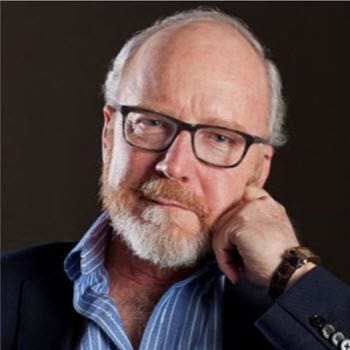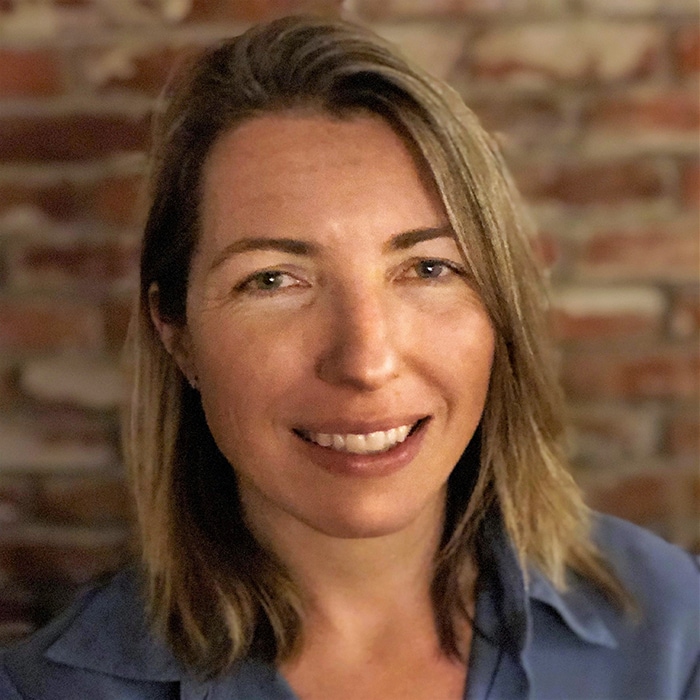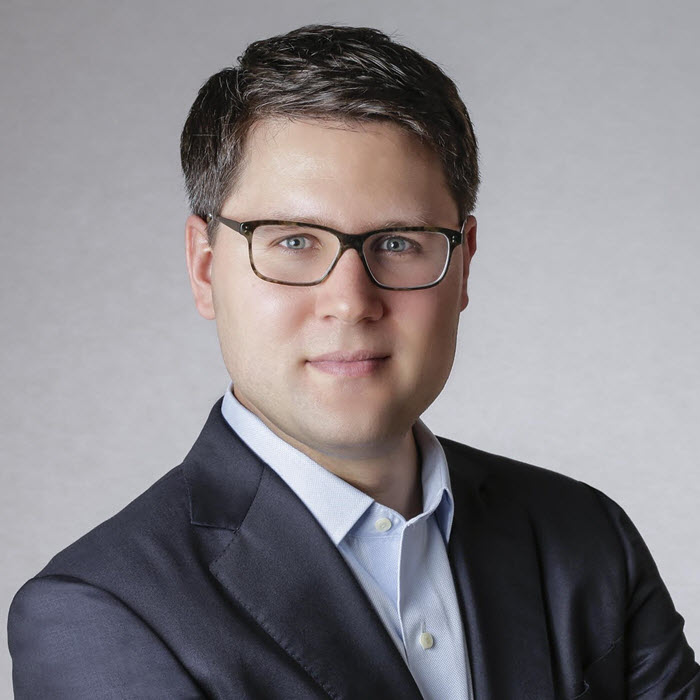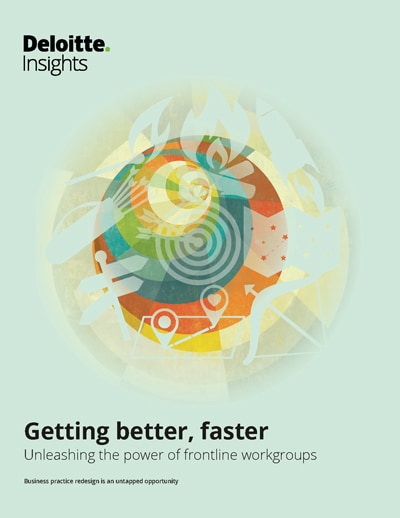Joint Special Operations Task Force has been saved

Joint Special Operations Task Force Adopting new approaches to fight an unconventional enemy
07 March 2018
 John Hagel III United States
John Hagel III United States John Seely Brown (JSB) United States
John Seely Brown (JSB) United States Maggie Wooll United States
Maggie Wooll United States Andrew de Maar United States
Andrew de Maar United States
In 2004, the military faced a new type of enemy: Al Qaeda in Iraq. AQI was less an army than a network of independent insurgents. How could Gen. Stanley McChrystal and the Task Force defeat them? By using six of the nine practices to transform into a flat and fast operation.
The US Joint Special Operations Task Force brings together some of the nation’s most elite soldiers, strategists, and analysts from every branch of the armed forces along with the civilian agencies that support them. In 2004, this group, then led by Gen. Stanley McChrystal, was tasked with defeating Al Qaeda in Iraq (AQI), an enemy fundamentally different from anything US forces had seen before.1
Created in 1980, Joint Special Operations Command (JSOC) has played an active role in every major US military conflict. The command specializes in directing covert and extremely challenging missions, including the capture of high-value targets, extracting vital US assets from conflict zones, and engaging in direct action on extremely short notice. To achieve this, JSOC establishes Task Forces (JSOTFs) in regions of strategic importance.
Learn More
Explore the practices and case studies
Read an overview of the opportunity
Download the full report or create a custom PDF
Following the 9/11 attacks and the 2003 American invasion of Iraq, a JSOTF was activated to mitigate the growing threat of Al Qaeda in Iraq. As McChrystal describes in his book Team of Teams, AQI seemed different from other enemies US forces had encountered. Rather than an army, AQI appeared to be a network of independent insurgents—fast, fluid, and mobile, without what US analysts considered standard operating procedures or organizational hierarchies. Enabled and amplified by mobile technologies such as smartphones, satellite telecom, and the ever-evolving spectrum of digital communication channels, from online video game chat rooms to time-limited instant messaging platforms, AQI fighters seemed to be constantly changing their locations and altering their patterns. And they were tough and resilient despite being poorly trained and resourced.
Notwithstanding advantages of resources and training, initially the Task Force struggled to gain ground.2 The tried-and-true operational model—extensive planning, training over multiple simulations, executing the mission, collecting intelligence and shipping it out for analysis, and waiting for analysis that could be used in the theater of operations—was far too slow to be effective. By the time intelligence was sent back, analyzed, and acted upon, the situation had changed, making it too late to respond; the process could not effectively deal with the volatile environment.3
To regain the initiative against an enemy operating as a dynamic network of independent insurgents, McChrystal reasoned, JSOTF–AQI had to drastically change its approach. The Task Force needed to become a network itself and empower those on the front lines to make decisions and act on fresh intelligence. JSOC would transform itself into a flat and fast operation, a “team of teams.”
The workgroups: Joint Special Operations Task Force assigned to Al Qaeda in Iraq (JSOTF–AQI)
The JSOTF–AQI can be thought of as a pool of Special Forces and intelligence analysts. Drawn from this pool, ad-hoc workgroups were formed to address specific threats or opportunities, typically executing counterterrorism raids.
- Size: The workgroups varied in size, from as few as three people to more than 20, depending on the mission or raid they were formed to address.4 The pool from which they were drawn—JSOTF–AQI—included members from a wide variety of backgrounds, including special operators drawn from the Navy SEALS, Army Rangers, Army Delta Forces and Green Berets, Air Force Special Tactics Squadron, Special Operations Air Regiment, and Marine Special Ops Command, as well as intelligence analysts from the CIA, FBI, NSA, and DIA.
- Sustained involvement: Although any given workgroup might convene from a few days to a few months to address opportunities and threats as they arose in the region, the highly trained special operations forces and intelligence analysts who comprised those workgroups were fully assigned to the broader pool of JSOTF–AQI.
- Integrated effort: One of the most significant differences for JSOTF–AQI was the recognition that this enemy required a truly integrated effort, both within workgroups carrying out a raid as well as at the pool level, rather than the traditional method of handoffs and functional silos that went along with the hierarchical structure of the larger military organization. Specialists and analysts had to be shoulder-to-shoulder with operators in the field, physically or through technology, to provide those operators with up-to-date information and to exploit and analyze any information captured in the raid as quickly as possible. Planning for raids and acting on additional information also required the integrated effort of operators and analysts working interdependently.
The results: More raids, higher-quality intelligence
As the operation evolved, the mission became less about achieving singular combat victories and more about achieving victories that could yield further actionable intelligence, in a theater where the shelf life of information was very short.
When McChrystal assumed command of the JSOTF in 2003, the group was conducting between 10 and 18 raids per month in Iraq. Three years later, in 2006, it was running an average of 10 raids per night—a 17-fold increase, with only minimal increases in personnel and funding. The more recent raids were also more successful, as measured by the percentage of targets located and significant improvements in the quality of the intelligence gathered. With its mission accuracy increasing, JSOTF began making a significant dent in AQI’s operations in the region.
Collectively, performance for the JSOTF pool also accelerated as a result of intelligence being distributed across the chain of command and acted upon, far more quickly—leaders would create new missions mere hours before they were executed, based on just-gathered intelligence. These improvements were in large part driven by bringing analysts closer to the action, including allowing them to go on raids or watching raids via live video.
Practices in play
As JSOTF changed its approach, it exemplified six practices: Commit to a shared outcome, Frame a powerful question, Reflect more to learn faster, Maximize potential for friction, Eliminate unproductive friction, and Bias toward action.
Commit to a shared outcome
Early on, JSOTF leadership realized that members were pursuing very different objectives. McChrystal writes, “To each unit, the piece of the war that really mattered was the piece inside their box on the org chart; they were fighting their own fights in their own silos. The specialization that allowed for breathtaking efficiency became a liability in the face of the unpredictability of the real world.”5 The special operations forces were concerned with executing missions; the intelligence analysts were focused on finishing their intel analysis. These distinct objectives tended to reinforce siloed thinking and barriers to collaboration.
The group needed to be able to respond more effectively to an enemy that had become increasingly nimble and more distributed. In order to have a Task Force that could cycle rapidly between collecting intelligence, analyzing it, and acting on it, members would have to be more aligned on what they were trying to achieve, a larger goal that transcended narrow, specialty-based metrics or tactical objectives related to a given operation. In place of the silos and old “hourglass” structure, with field operatives collecting large amounts of potentially valuable intelligence and far-away analysts receiving and interpreting the information and recommending action, McChrystal envisioned a flattened, multi-noded organization.6
The challenge was to reduce competition between priorities with an approach that served a unified goal. And that goal was ambitious: not just to regain the initiative but to transform JSOC’s culture into one that could find a way to defeat a new, more complex kind of enemy. And to do that, the workgroup had to commit to a shared outcome of defeating this enemy by turning more intelligence into better actions, faster.
Frame a powerful question
On paper, the confrontation between AQI and the Task Force should have been no contest. US forces had long excelled in the most rigorous training for special warfare operators; JSOTF could tap into an impressive array of firepower, armored vehicles, stealth surveillance technology, and more. Meanwhile, AQI relied on improvised explosive devices, propane tanks, and expired ammunition. Yet AQI was increasingly winning.
Task force members had to ask themselves how they could defeat an enemy that was using technology as a command structure in ways they had never confronted before. As McChrystal framed it, “If we were the best of the best, why were [AQI’s] attacks not disappearing, but in fact increasing?”7
This powerful question challenged the Task Force to fundamentally reconsider its approach, rather than just improve the execution of the traditional approach. More questions followed: What if transparency were radically increased across JSOC? What if frontline soldiers made command decisions? What if analysts and soldiers worked side by side? What if they used technology in new ways?
These questions led to the realization that, in order to fight a networked enemy, JSOTF–AQI had to become a network itself. The leadership resolved to dissolve the established process and protocol in the name of making a more effective fighting force. Better information needed to move across the command more quickly, with both soldiers and analysts given more degrees of freedom to act.
Reflect more to learn faster
To successfully fight AQI, JSOC needed to learn at a rate that kept up with the terrorist group’s communications, and with the pace of change on the battlefield. That meant dramatically increasing how quickly it could process information from intelligence.8
The Task Force’s limiting factor resided in its organizational DNA. Members were outstanding at leveraging 20th-century tactics and strategy that were of little use on the 21st-century battlefield.9 As McChrystal described the state of operations in Iraq, “In the time it took us to move a plan from creation to approval, the battlefield for which the plan had been devised would have changed. . . . We could not predict when the enemy would strike, and we could not respond fast enough when they did. . . . The amount of nonlinear change that once took months to play out can now happen in the time that it takes to type 140 characters.”10 As a result, members had to unlearn a great deal of what they knew.
Leaders resolved to restructure from the ground up, continually seeking and incorporating feedback in order to make critical information more widely available and decentralize decision-making authority. Addressing the division between intelligence and operations staff, JSOTF leadership stressed interagency collaboration. Together, operators and intelligence analysts were tasked with mapping intelligence gathering to “pattern of life analyses,” designed to pinpoint small but important changes in their targets’ activities, in real time.
One of the biggest changes leaders made was broadening the circle of intelligence briefings. As they brought more people into the briefings, soldiers began making more informed decisions in operations, analysts sent more of the “right” information up the food chain quicker than ever before, and the command was more able to focus on the highest-impact issues. As access to intelligence expanded, it became apparent that many of the barriers to information-sharing that had been put in place to reduce “noise” had actually had the effect of obscuring the context many required to understand how and where they fit into the broader effort. As the success rates of missions improved, leaders opened up the briefings to a larger number and broader range of participants.
Maximize potential for friction
As an entity that brings together units from different branches of the military as well as the civilian agencies that support them, JSOC had huge potential for friction—both positive and negative. This potential was further intensified in JSOTF–AQI, which used techniques including daily live video briefings to further expand the number of people working on a given problem. The Task Force attracted a range of professionals, from highly trained special operators such the Navy SEALS, the Army Rangers, the Army Delta Forces and Green Berets, the Air Force Special Tactics Squadron, the Special Operations Air Regiment, and the Marine Special Ops Command to intelligence analysts from the CIA, FBI, NSA, and DIA.
These highly specialized groups often had competing organizational priorities. Special operators were focused on mission execution and capturing targets, while intelligence analysts were focused on feeding analysis back to headquarters. For example, when Special Forces would raid a location but not find their designated target, from their viewpoint the mission was a failure. Intelligence analysts, though, might view the raid as an incredible opportunity to gather intelligence and peek inside an otherwise opaque AQI network. Rather than try to reduce friction, JSOC created workgroups that brought together these divergent priorities and perspectives, including both analysts and operators, so they could reinforce and learn from each other. That meant moving analysts (who typically worked from JSOC command in Washington) to Iraq, where they could live, work, and better understand the needs of those on the ground. And it worked: Working shoulder to shoulder, operators and analysts each learned what the other needed to succeed.
Leaders further increased the potential for friction by increasing the transparency of the operation and sharing daily intelligence briefings not only with the Task Force but with the entire global JSOC network via live video feed. Over time, the audience for these live briefings extended beyond JSOC to include any soldier forward-deployed, as well as officers and analysts at the Pentagon; eventually, there were several thousand daily participants.11 The increased transparency was designed to maximize the opportunity for friction to occur by dissolving organizational barriers and creating more opportunity for more people to ask questions, provide suggestions, and offer challenges in relation to operations that they previously would have never known about. Some of this friction occurred on the call itself, but much of it continued in parallel chat rooms that were set up during the briefings as well as offline in between briefings. A key part of maximizing potential for friction is creating environments in which the friction can surface.
One byproduct of this increased transparency: Failures were more visible. As a result, the Task Force leadership was able to demonstrate that failures could be acceptable, as long as they weren’t due to negligence. This led to greater accountability. It shifted the group’s culture to one in which failure became a more accepted part of the process of acting on intelligence more swiftly. Rather than being punished for honest failures, soldiers were encouraged to problem-solve and take initiative, and to learn from mistakes.
Eliminate unproductive friction
To take advantage of the potential for productive friction, unproductive fiction was minimized through specific practices. For example, given the wide range of thousands of professionals participating—with competing agendas, diverging expectations and experiences, and varying levels of understanding and expertise—daily briefings could easily turn unproductive or get bogged down before completing the full agenda. The risk of inaction was high: letting valuable intelligence die on the vine. To succeed, the Task Force needed to harness the diversity in the room while mitigating the unproductive elements accompanying that transparency.
To address these issues, the Task Force limited the amount of time each presenter was given to four minutes—including discussion. Presenters then aimed to complete a briefing in only 30 to 60 seconds, allowing the rest of the time for discussion. Time limits forced briefers to focus on the most important points, providing only the most salient and succinct information to the group. They also inspired richer discussion, with the time restriction acting as a forcing mechanism and members moderating themselves to ensure that what needed to be heard was heard. By starting with a broad set of topics and allowing individuals to go deeper afterward, the Task Force could get the necessary context and information.
Eliminating unproductive friction in this way allowed productive friction to flourish—such as when a briefing turned into a healthy debate between two agencies that had studied the same piece of evidence but reached drastically different conclusions. Under extreme time compression, briefings became learning conversations—and created a space for forging a common language, with specialists supplementing each other’s findings to discover better ways forward.
Bias toward action
Obviously, the armed forces are organized around taking action—being in the action is a term for combat. When it came to JSOTF–AQI’s mission, the question that emerged was how to transform a culture of action into a bias toward the right kind of action—and boosting the volume of effective small actions performed daily.12 How to maximize momentum and improvisation while making strong, ethical decisions?
The hierarchy of the command often meant a long series of high-level approvals before any action could be taken, causing too much time to be lost. McChrystal explains that he “was connected to almost every decision of consequence. This was great for establishing holistic awareness, but it also created a nightmare of paperwork and approvals. . . . [O]ur priority should be reaching the best possible decision that could be made in a time frame that allowed it to be relevant.”13
In Iraq, “The risks of acting too slowly were higher than the risks of letting competent people make judgment calls.”14 In order to be more dynamic and adaptive, the Task Force reframed risk, pushing decision-making authority down to the front lines. A rule of thumb soon emerged: Group members should “go until no,” so long as their actions supported the fight against AQI’s insurgency and were not immoral or illegal. With major decisions such as airstrikes, McChrystal established guidelines but told Task Force members that they were ultimately responsible to make each call, and that he would support their actions.
When it came to sharing intelligence, the Task Force adopted another new mind-set: assuming that information needed to be shared—and shared quickly. As soon as a raid was completed, soldiers would photograph every scrap of potential intelligence and immediately send the data to the imagery analysts, linguists, and subject matter experts.15 Much of the analyzed intelligence was promptly shared via the daily briefings, which invited additional viewpoints and ultimately led to greater mission success rates. More information was processed, validated, and acted upon far more quickly. Pairing operators and analysts within the Task Force seemed to have another benefit here, forging deeper, more direct relationships that allowed JSOC to significantly ramp up its pace and number of operations, from approximately 10 a month to nearly 300—many simultaneous. JSOC leadership, meanwhile, took on a new, less hands-on role, becoming “eyes on, hands off,” with little need to intervene in day-to-day operations.
© 2021. See Terms of Use for more information.





